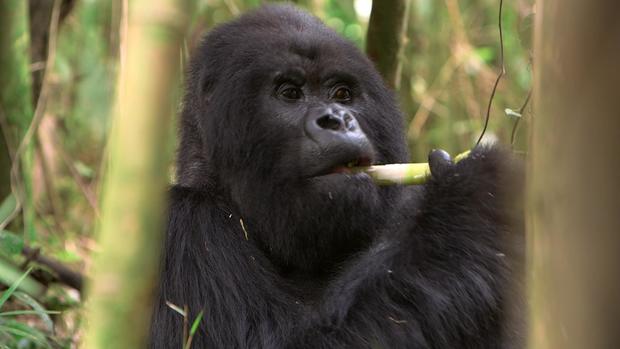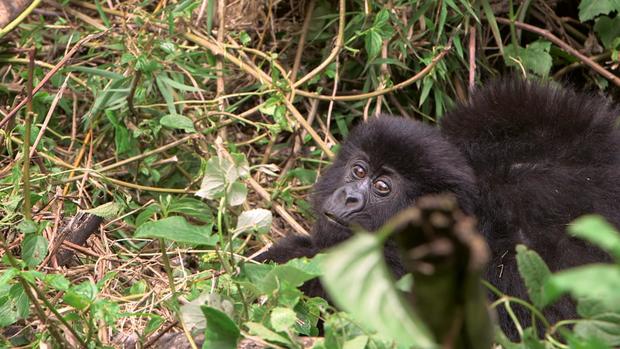Climate Diaries: Drought threatening African mountain gorillas
VOLCANO NATIONAL PARK, Rwanda -- There’s a population on the slopes of these volcanic peaks in central Africa that knows nothing of arguments in Washington about climate change.
But the famous “gorillas in the mist” do know something is going on.
They know the bamboo shoots that make up a major part of their diet, and which used to sprout like clockwork, are now less predictable.
The rains that produce them were a month late this year. The gorillas have had to adapt their roaming and foraging patterns because the old seasonal rhythms of food production have altered. Their world is changing.
The gorillas’ problems are made worse by the troubles of their distant cousins and close neighbors: people.
Since the late rains have also made the water supply down in the valleys less reliable, local villagers have been going up into gorilla country, where they’re not supposed to go, to bring that good mountain water home.
And park ranger Abel Musana says water isn’t the only thing the people are after during the drought.
“The harvest will be impacted and the people are coming to invade the habitat, which is for gorillas,” Musana said.
When the people are low on food, they go into the park looking for it.
The human population has ballooned in the areas surrounding the park. According to David Greer of the World Wildlife Fund’s great apes program, when those people are forced up into the mountains they bring disease and other dangers with them.
“They have to enter the park to access this clean water. And in the meantime they might want to set a snare for catching an ungulate for food,” Greer said, referring to a class of mammals that includes antelopes and other local fauna.
But on some occasions, a gorilla can become ensnared in those same traps.
That’s what happened to one gorilla, filmed by a “60 Minutes” team a few months ago. The snare was removed by one of the vets whose work has actually helped the ape population increase lately.
Still, there are only about 880 mountain gorillas left in the world, confined to the mountain tops across Uganda, the Democratic Republic of the Congo and Rwanda. They’re already considered critically endangered. And as their world changes, they have nowhere to go.







